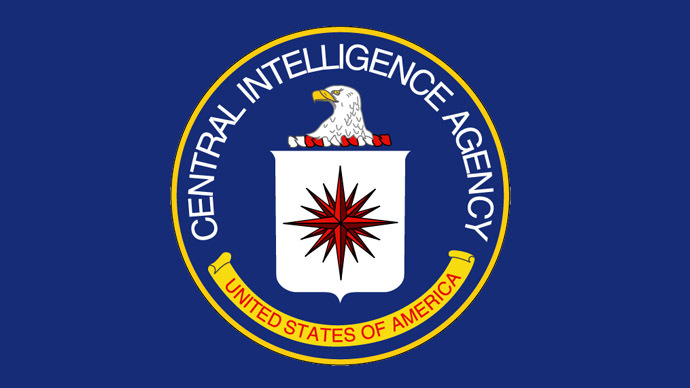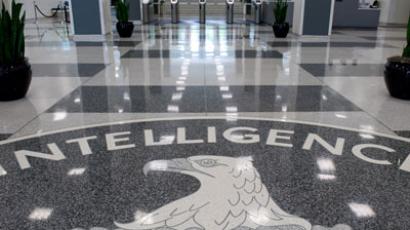Judge says family of bioweapons scientist can’t sue CIA over unsolved death

A federal judge in Washington, DC has dismissed a lawsuit that alleged the CIA murdered one of its own agents in 1953 and then attempted to pass it off as a suicide.
Sixty years after the death of bioweapons expert Dr. Frank Olson, United States District Judge James E. Boasberg ruled last week that the family of the former Central Intelligence Agency specialist can’t sue the US government.
The family of Dr. Olson filed a lawsuit against the CIA in late 2012 accusing the agency of a clandestine murder that had made it a hot topic of discussing more than half a century after the fact. But while Judge Boasberg agrees that many of the allegations put forth by the Olson family are likely true — even while admittingly coming off as unbelievable — he ruled that an earlier settlement agreed upon by the scientist’s children and the sheer tardiness of the late suit have left him unable to allow the case to continue.
“[T]he public record supports many of the allegations that follow, farfetched as they may sound,” Boasberg began his ruling. Pages later, however, he wrote, “Concluding that most of the allegations are both untimely and waived by a prior settlement agreement, and that any timely or preserved claims fall outside of the United States’ waiver of sovereign immunity, the Court will grant the Government’s Motion” to dismiss.
According to the family’s attorney, Dr. OIson discussed leaving the CIA after being poisoned with LSD against his will as part of the MK ULTA behavioral engineering project, a top-secret CIA program that existed in part all the way through the 1970s.
Days after allegedly and unwillingly becoming a government guinea pig, Olson reportedly told a colleague he wanted to resign from the agency. That friend alerted Dr. Robert Lashbrook of the Chemical Division of the CIA’s Technical Support Staff, who in turn took Olson to New York in order to see a doctor. Then for a week in late 1953, the CIA shuffled Olson around the East Coast for various so-called psychiatric treatments before ultimately checking him into a Manhattan high-rise.
“The night of November 27, Lashbrook and Olson shared a room at the Statler Hotel in Manhattan,” Judge Boasberg recalled in his ruling. “Both had two martinis before bed. At 2:30 a.m. on November 28, Olson fell out of the window of his hotel room, tumbling thirteen stories to his death.”
Olson went on to cite a CIA manual made a short time after that included a “secret assassination” technique that could potentially cover-up such a death.
“For secret assassination . . . the contrived accident is the most effective technique” because “[w]hen successfully executed, it causes little excitement and is only casually investigated,” the report read.
“Specifically,” added Boasberg, “the manual counseled that ‘[t]he most efficient accident . . . is a fall of 75 feet or more onto a hard surface . . . [such as one from] unscreened windows.’ The manual also recommended that assassins use a blunt object to inflict ‘[b]lows . . . directed to the temple,’ but noted that ‘[c]are is required to insure [sic] that no wound or condition not attributable to the fall is discernible after death.’ Finally, the manual suggested that ‘[i]f the subject’s personal habits make it feasible, alcohol may be used . . . to prepare him for a contrived accident of any kind.’”
Indeed, the exhumation of Olson’s body decades later revealed a blow to his head on par with what the CIA manual suggested, and the official cause of death was later changed from suicide to "unknown." But even though Boasberg declined to rightfully dismiss the family’s claims, he wrote that the delayed filing coupled with an early settlement left him unable to move the case anymore forward.
The family said their 1975 settlement with the US government shouldn’t be considered valid, though, since they “relied on the CIA’ assurances that all documents relevant to the circumstances surrounding the death had been turned over.” Eighteen years later, former CIA Director William Colby sent one of Olson’s sons a message indicating there was more to the story of his father’s death. Colby died shortly after, however, and the murder claim was not filed in court until nearly two decades later.
“If Plaintiffs’ theory were right, the statute of limitations would never definitively run. They could wait another decade, request additional information from the CIA, and then (deeming the response inadequate on account of negligent supervision) sue for every instance of “negligent supervision” since 1953,” wrote Boasberg. “The continuing-violation doctrine does not stretch so far.”
Coupled with the 1975 settlement that gave Eric and Nils Olson $187,500 each, Judge Boasberg ruled that the court must side with the government’s motion to dismiss the lawsuit.













